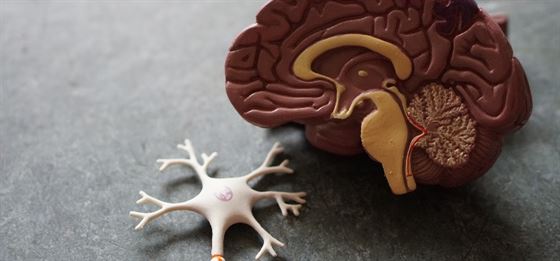
Temper Tantrums in Children: Why They Happen and How To Respond?

Tantrums come in all shapes and sizes. They can involve spectacular explosions of anger, frustration and disorganised behaviour – when your child loses it. You might see screaming, stiffening limbs, an arched back, kicking, falling down, flailing about or running away. In some cases, children hold their breath, vomit, break things or hurt themselves or other people as part of a tantrum. Any parent can find temper tantrums frustrating. Tantrums, however, should be viewed as learning opportunities, rather than as catastrophes.
Why Do Children Throw Tantrums?
According to the National Library of Medicine, tantrums most commonly occur between the ages of two and three but may even occur as young as 12 months. Researchers have found that tantrums occur in 87% of 18 to 24-month-olds, 91% of 30 to 36-month-olds, and 59% of 42 to 48-month-olds. It is common for toddlers to have a tantrum at least once per day, as is the case for 20% of two-year-olds, 18% of three-year-olds and 10% of four-year-olds. This is because young children are still at an early stage of social, emotional and language development. They can’t always communicate their needs and feelings, including the desire to do things for themselves, so they might get frustrated. And, they’re learning how their behaviour can influence others. So tantrums are one of the ways young children express and manage their feelings and try to understand or change what’s going on around them.
Older children can have tantrums, too, perhaps because they haven’t learned safe ways to express or manage feelings yet.
For both toddlers and older children, there are four things that can make tantrums more likely to happen -
- Temperament
- – This influences how quickly and strongly children react to things like frustrating events or changes in their environment. Children who are more sensitive might be more easily upset by these things.Stress, hunger, tiredness and overstimulation
- – These factors can make it harder for children to express and manage feelings and stay calm.
- Situations that children just can’t cope with
- – For example, a toddler might have trouble coping if an older child takes a toy away.
- Strong emotions
- – Worry, fear, shame and anger can be overwhelming for children.
How To Handle Tantrums?
Ignoring a tantrum a child is throwing to obtain attention from parents is one of the best strategies to stop this habit. If your youngster throws a fit after being denied something, remain composed and don't give them many reasons why they can't have it. Instead, switch to a different activity with your kid. After a tantrum, when they are aware they have not been particularly cute, children may be most sensitive. Give your youngster a hug and tell them they are loved no matter what (when they are calm). However, do not give in to your child's tantrum. If you give in, your child will only see this as confirmation that the tantrum was successful.
When handling a tantrum, avoid adding to the issue by expressing your own displeasure or rage. Remind yourself that part of your job is teaching your child to control their emotions. You must therefore maintain your composure.
Here are three ways to help you deal with temper tantrums of your child.1. Adjust Their Sleep Cycle
Kids who don't get enough sleep may exhibit hyperactivity, irritability and excessive conduct. Tantrums can be significantly reduced by proper sleep. Find out how much sleep your child needs at their age and adjust their sleep timings accordingly.
2. Distract Your Child
Try offering something else in place of what they can't have. Start a new activity to replace the frustrating or forbidden one (Ffor example, if your child is jumping on the couch, ask them to come help you cook by offering a plastic container and wooden spoon. Then you can praise them for helping or following directions, rather than having them start a tantrum or refuse to get down). Or simply change the environment. Take your toddler outside or inside or move to a different room.
3. Listen To Your Child's Request
Is it outrageous? Maybe it isn't. Choose your battles. It's okay to change your mind if you originally said no — but find a way to allow the desired treat as a reward for good behaviour.
When is Professional Help Needed?
As your child's self-control improves, tantrums should become less common. Most children begin to have fewer tantrums by age 3 1/2. If your child is causing harm to himself or herself or others, holds his or her breath during tantrums to the point of fainting, or has worsening tantrums after age 4, share your concerns with your child's doctor. The doctor might consider physical or psychological issues that could be contributing to the tantrums.
Remember, tantrums usually aren't cause for concern and generally stop on their own. As kids mature, they learn to self-regulate their emotions, behaviours and thoughts. They learn to cooperate, communicate, and cope with frustration. Less frustration and more control will mean fewer tantrums — and a happier family.
Articles
Build your awareness and get inspired with our researched articles on how you can strengthen your well-being
Popular Topics
An OTP has been sent to the email address
provided.
Please check your Inbox and Spam folders.

What Would You Like to Speak with a Specialist About?
Mental Fitness Journey starts Now!
Chearful Connects you with Top-tier Qualified Wellness specialists for the Price of a cup of Coffee!

Next Steps
- A Client Team member will reach out to you to schedule a session with the most suitable specialist.
- You will receive an email with a 10% Discount Code* for your 1st session.
- We invite you to Explore the Platform & Sign Up today! *Upto a maximum of $10 discount on a session purchased




 2051 Read
2051 Read




.jpg)







.png)
.png)
.jpg)

.jpg)

.jpg)




.jpg)


































.jpg)

.jpg)
.jpg)




































